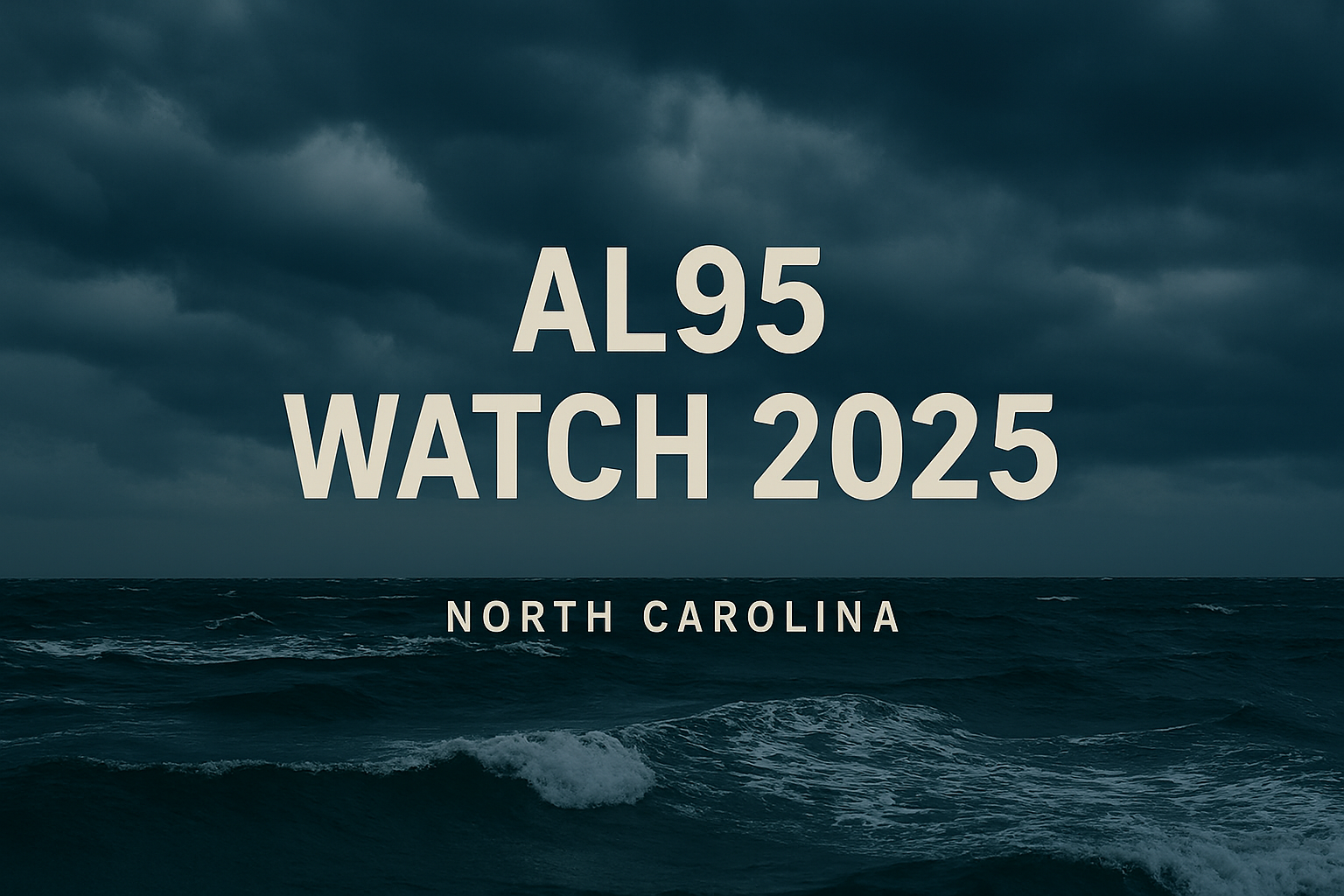NHC Tropical Storm North Carolina 2025: Monitoring Potential Cyclone AL95

A disturbance east of North Carolina, dubbed AL95, is showing signs of becoming the next tropical storm in the 2025 Atlantic hurricane season, with the National Hurricane Center (NHC) reporting a 70% chance of development, per Newsweek. The NHC tropical storm North Carolina 2025 watch highlights a critical period as the season nears its August peak. With three named storms already impacting the U.S., what does this system mean for coastal communities, and how can residents prepare?
The Disturbance: AL95’s Potential
The NHC is closely monitoring AL95 and other Atlantic systems:
- AL95 Details: A non-tropical low pressure system, 180–300 miles east of North Carolina, is producing gale-force winds and increased showers, per Newsweek. It’s detaching from a frontal boundary, with a 70% chance of becoming a tropical storm by Monday, moving east-northeast at 10–15 mph, away from land, per NHC’s August 3 outlook.
- Other Systems: A second disturbance southeast of the Carolinas has a 20% chance of development by midweek, per Newsweek. A tropical wave off Africa may form a depression by late next week, with a 20% seven-day chance, per NHC.
- Season Context: The 2025 season has seen Andrea, Barry, and Chantal, with Chantal causing flooding in North Carolina, per Newsweek. The season, running June 1 to November 30, is above-average due to warm Atlantic waters, per NOAA.
Critical Perspective: Gaps in the Narrative
The establishment narrative, per Newsweek and NHC, emphasizes AL95’s potential and the season’s activity but overlooks key issues:
- Coastal Risks: While AL95 is moving offshore, rip currents and rough surf from distant storms like Chantal caused beach hazards, yet no warnings are active, per Newsweek. This downplays ongoing coastal dangers, per AccuWeather.
- Public Preparedness: The narrative lacks emphasis on early preparation, despite NHC’s 72-hour advisory capability, per NOAA. Only 40% of coastal residents have hurricane kits, per FEMA.
- Data Limitations: NHC’s reliance on satellite and limited Hurricane Hunter flights for AL95, per Fox Weather, may delay precise forecasts, unaddressed in updates, per Newsweek.
- Climate Context: Warm Atlantic waters fuel storms, but the narrative omits climate change’s role in increasing storm frequency, per The Guardian.
This focus on immediate development risks understating long-term safety and climate concerns.
Implications for Coastal Communities
AL95 and the 2025 season pose challenges:
- Safety Risks: Even without landfall, AL95’s gale-force winds could produce rip currents along the Carolinas, per USA Today. Chantal’s 7–8 inches of rain in North Carolina shows flood potential, per Wikipedia.
- Economic Impact: Coastal businesses face disruptions from beach closures, with 30% reporting losses during past storms, per FEMA.
- Forecast Improvements: NHC’s upgraded models, offering 5% better accuracy, and 72-hour advisories enhance warnings, per NOAA.
Recommendations for Preparedness
- Residents: Build hurricane kits and monitor updates via nhc.noaa.gov, per Newsweek. Sign up for weather alerts at ready.gov.
- Communities: Develop a hurricane preparedness app for real-time NHC updates and local resource sharing, inspired by 2024 flood response apps, per FEMA.
- NHC: Issue rip current risk maps for all active systems, as done for Chantal, per Naples Daily News. Share updates on X at @NHC_Atlantic.
Conclusion
The NHC tropical storm North Carolina 2025 watch for AL95 signals a busy Atlantic hurricane season. While the system is likely to stay offshore, coastal communities must stay vigilant for rip currents and future storms. Prepare now and share safety tips below.










